Prohibited & Forbidden Materials
Materials defined in the following hazard classes are not allowed passage across the Chesapeake Bay Bridge-Tunnel:
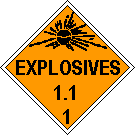
1.1 - Explosives
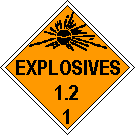
1.2 - Explosives
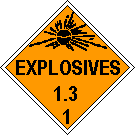
1.3 - Explosives
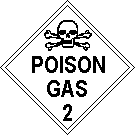
2.3 - Poison Gas
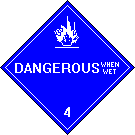
4.3 - Dangerous When Wet
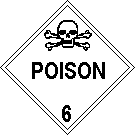
6.1 - Inhalation Hazard Only
Non-Restricted Materials & Exceptions
Materials defined in the following hazard classes are not restricted from crossing the Chesapeake Bay Bridge-Tunnel unless exceptions are noted:
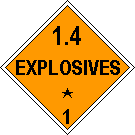
1.4 - Explosives
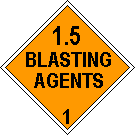
1.5 - Explosives
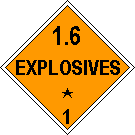
1.6 - Explosives
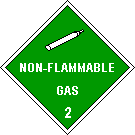
2.2 - Nonflammable Compressed Gas
Except for oxygen in tank vehicles, which is prohibited
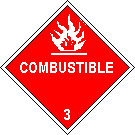
3 - Combustible Liquid
Except formaldehyde solutions which are restricted to 100 gallon containers or less
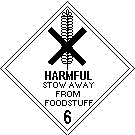
6.1 - Poisonous Materials
PG 1 OR II, OTHER THAN PG 1 INHALATION HAZARD, AND PG 111, STOW AWAY FROM FOODSTUFF
Except inhalation hazards, which are prohibited
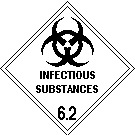
6.2 - Infectious Substances
ORM-D, OTHER REGULATED MATERIALS
Restricted Materials
Materials in the following hazard classes are allowed passage across the Chesapeake Bay Bridge -Tunnel with noted restrictions:
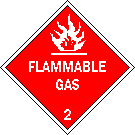
2.1 - Flammable Gas
Not to exceed 120 gals in 6 gal containers or less except for LPG, which is restricted to two 60 pound cylinders LPG capacity (approx. 141 pounds w.c. each), or any combination of cylinders less than 60 pounds LPG capacity with a total of 120 gals
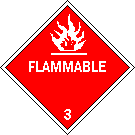
3 - Flammable Liquid
Not to exceed 120 gals in 6 gal containers or less
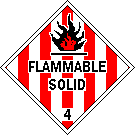
4.1 - Flammable Solid
Not to exceed 900 pounds per vehicle
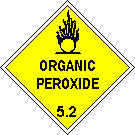
5.2 - Organic Peroxides
Not to exceed 120 gals in 6 gal containers or less or 900 pounds or less per vehicle
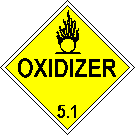
5.1 - Oxidizer
Not to exceed 120 gals in 6 gal containers or less or 900 pounds or less per vehicle
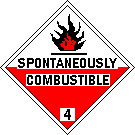
4.2 - Spontaneously Combustible Materials
Not to exceed 900 pounds per vehicle
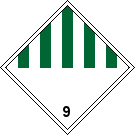
9 - Miscellaneous Hazardous Materials
Not to exceed 250 gals in 60 gal containers or less or 2000 pounds or less, except oils, N.O.S., with flashpoint not less than 93 deg C/ 200 deg F, which is not restricted
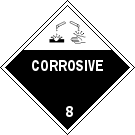
8 - Corrosive Materials
Not to exceed 120 gals in 60 gal containers or less or 900 pounds or less
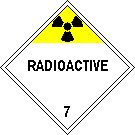
7 - Radioactive Materials
Not to exceed 300 curies or 500 pounds per vehicle and permission is obtained
Reference Index
| Name of Class or Division | Class Number | Division # (if any) | 49CFR Reference for Definitions |
|---|---|---|---|
| ( 1) Forbidden materials | None | --- | --- |
| ( 2) Explosives (with a mass explosion hazard) | 1 | 1.1 | 173.5 |
| ( 3) Explosives (with a projection hazard) | 1 | 1.2 | 173.5 |
| ( 4) Explosives (with predominantly a fire hazard) | 1 | 1.3 | 173.5 |
| ( 5) Explosives (with no significant blast hazard) | 1 | 1.5 | 173.5 |
| ( 6) Very insensitive explosives; blasting agents | 1 | 1.6 | 173.5 |
| ( 7) Extremely insensitive detonating substances | 1 | 1.7 | 173.5 |
| ( 8) Flammable gas | 2 | 2.1 | 173.115 |
| ( 9) Nonflammable compressed gas | 2 | 2.3 | 173.115 |
| (10) Poisonous gas | 2 | 2.3 | 173.115 |
| (11) Flammable and combustible liquid | 3 | --- | 173.12 |
| (12) Flammable solid | 4 | 4.1 | 173.124 |
| (13) Spontaneously combustible materials | 4 | 4.2 | 173.124 |
| (14) Dangerous when wet material | 4 | 4.3 | 173.124 |
| (15) Oxidizers | 5 | 5.1 | 173.127 |
| (16) Organic peroxides | 5 | 5.2 | 173.128 |
| (17) Poisonous materials | 6 | 6.1 | 173.132 |
| (18) Infectious substances (Etiological agents) | 6 | 6.2 | 173.134 |
| (19) Radioactive materials | 7 | --- | 173.403 |
| (20) Corrosive materials | 8 | --- | 173.136 |
| (21) Miscellaneous hazardous materials | 9 | --- | 173.14 |
| (22) Other regulated materials: ORM-D | None | --- | 173.144 |
B. Terms Defined.
(1) “Container” means a package or receptacle used to contain hazardous materials for transportation, including a box, bottle, can, drum, barrel, cylinder, carboy, or other shipping package, other than a tank vehicle or bulk packaging, used for the transportation of hazardous materials.
(2) “Flash Point” means the minimum temperature at which a substance gives off flammable vapors which in contact with spark or flame will ignite.
(3) “Gross weight” means the total weight of a container and its contents.
(4) “Hazardous material” means a substance or material, including a hazardous substance, which has been determined by the Secretary of Transportation for the United States Department of Transportation (U.S.D.O.T.) to be capable of posing an unreasonable risk to health, safety and property when transported in commerce and which has been so designated.
(5) “Hazardous substance” means a material, including its mixtures and solutions, that is listed in the Appendix to 49 CFR 172.101, which is incorporated by reference. This definition does not apply to petroleum products that are lubricants or fuels.
(6) “N.O.S.” means not otherwise specified.
(7) “Net weight” means the weight of the contents of a container only.
(8) “Shipping paper” means a manifest, memorandum receipt, bill of lading, shipping order, or other document describing material to be transported.
(9) “Tank vehicle” means any vehicle with a cargo tank, portable tank, bulk pyramided cylinders, or tube trailer used for the transportation of liquids or gases.
2. General
A. The U.S. Department of Transportation Regulations, 49 CFR 171-177, 397, and any revisions, U.S. Nuclear Regulatory Commission Regulations, 10 CFR 73, and any additional federal regulations affecting the transportation of hazardous materials by motor carriers on highways are incorporated by reference into these regulations.
B. A vehicle loaded with any hazardous material or a tank vehicle which last contained a hazardous material may not be allowed on or in the Chesapeake Bay Bridge-Tunnel District unless it conforms to these regulations and other regulations regarding the use of the Chesapeake Bay Bridge-Tunnel District.
C. Chesapeake Bay Bridge-Tunnel District employees shall have the right to inspect the cargo or shipping papers of any vehicle to ascertain if it complies with all State and federal regulations relating to the transportation of hazardous materials. The inspection may take place at any point where or after the vehicle enters on any District property or its approaches. If hazardous materials cannot be identified by class, or if listed only as N.O.S., or if shipping papers are not available to determine the type of cargo, the vehicle may be prohibited from entering or may be diverted off any District property.
D. For purposes of initiating an inspection under Section C of this regulation, a vehicle displaying the hazardous material identification number 1203 on a “Flammable” placard is presumed to be transporting the hazardous material with the lowest flashpoint which legally can be transported under that identification number.
E. All standards and requirements imposed by the Chesapeake Bay Bridge-Tunnel District which are incorporated by reference, shall be enforced.
F. The Executive Director or the Director of Operations of the Chesapeake Bay Bridge-Tunnel District may waive portions of these Rules and Regulations in unusual circumstances provided safeguards are implemented to protect the facility and traveling public.
3. Alternative-Fuel Vehicles.
A. Alternative-fuel vehicles powered by liquefied petroleum gas (LPG), liquefied natural gas (LNG) or compressed natural gas (CNG) shall be permitted if the:
(1) Vehicle has a:
(a) Dedicated alternative-fuel system installed by the manufacturer of the vehicle; or
(b) Fuel system which has been properly converted to an alternative fuel system.
(2) Vehicle alternative-fuel system conforms to applicable industry standards, including:
(a) NFPA 52 – Standard for Compressed Natural Gas (CNG) Vehicular Fuel Systems, which is incorporated by reference; or
(b) NFPA 58 – Standard for the Storage and Handling of Liquefied Petroleum Gases (LPG), which is incorporated by reference.
(3) Vehicle alternative-fuel system conforms to applicable federal regulations.
(4) Fuel capacity of the vehicle does not exceed 300 pounds water capacity.
B. Alternative-fuel vehicles shall display all markings and symbols required by law or regulation to identify the alternative-fuel system.
4. Tunnel Restrictions.
A. This regulation does not apply to fuel contained in the fuel system of the transporting vehicle, or in the fuel systems of vehicles and equipment being towed or carried.
B. Flames used for heating vehicles or loads shall be extinguished before the vehicle enters the Chesapeake Bay Bridge-Tunnel or its approaches.
C. The following classes of hazardous materials are prohibited from being transported through the Chesapeake Bay Bridge-Tunnel, as indicated:
(1) Forbidden materials are prohibited;
(2) Class 1 explosives, division 1.1, 1.2, and 1.3 are prohibited;
(3) Class 2, division 2.3 poisonous gas, is prohibited;
(4) Class 4, division 4.3 dangerous when wet materials, are prohibited;
(5) Class 6, division 6.1 poisonous materials, if inhalation hazard exists, are prohibited;
D. Tank vehicles which are empty, or which have a residue, or vehicles transporting empty containers are prohibited from entering the Chesapeake Bay Bridge-Tunnel if they previously transported a prohibited hazardous material, with the following exceptions:
(1) Tank vehicles or containers that have been sufficiently cleaned of residue and purged of vapor to remove any potential hazard;
(2) Tank vehicles or containers that have been reloaded with a material not classified as a hazardous material;
(3) Tank vehicles or containers whose previous cargo was:
(a) A Class 3 combustible liquid;
(b) A Class 8 corrosive material;
(c) A Class 5 oxidizer;
(d) A Class 5 organic peroxide; or
(4) Completely empty containers whose previous cargo was a Class 3 flammable liquid.
E. Tank vehicles used to transport Class 3 flammable liquids, even if empty, are prohibited from entering the Chesapeake Bay Bridge-Tunnel.
F. The following classes of hazardous materials are permitted to cross the Chesapeake Bay Bridge-Tunnel, with or without restrictions, as indicated:
(1) Class 1 explosives, division 1.4, 1.5, and 1.6 are permitted;
(2) Class 2, division 2.1 flammable gas is permitted provided quantities do not exceed 120 gallons in 6 gallon containers or less, with exceptions for LPG, which is restricted to two 60 pound cylinders LPG capacity, approximately 141 pounds water capacity each, or any combination of cylinders less than 60 pounds LPG capacity, with a total of 120 pounds LPG capacity;
(3) Class 2, division 2.2 nonflammable compressed gas, is permitted with the exception of oxygen, which is prohibited if in tank vehicles;
(4) Class 3, flammable liquid, having a flash point below 100o F,is permitted provided quantities do not exceed 120 gallons in 6 gallon containers or less per vehicle;
(5) Class 3, combustible liquid, having a flash point above 100o F, is permitted with the exception of formaldehyde solutions which are restricted to 100 gallon containers or less;
(6) Class 4, division 4.1 flammable solid, is permitted provided quantities do not exceed 900 pounds per vehicle;
(7) Class 4, division 4.2 spontaneously combustible materials, are permitted provided quantities do not exceed 900 pounds per vehicle;
(8) Class 5, division 5.1 oxidizers, are permitted provided quantities do not exceed 120 gallons in 6 gallon containers or less or 900 pounds or less, per vehicle;
(9) Class 5, division 5.2 organic peroxides, are permitted provided quantities do not exceed 120 gallons in 6 gallon containers or less or 900 pounds or less, per vehicle;
(10) Class 6, division 6.1 poisonous materials not marked PG I (Inhalation Hazard), or PG III (Stow Away From Foodstuffs), are permitted;
(11) Class 6, division 6.2 infectious substances, are permitted;
(12) Class 7, radioactive materials, are permitted provided quantities do not exceed 300 curies and the gross weight does not exceed 500 pounds per vehicle and permission is obtained;
(13) Class 8, corrosive materials, are permitted provided quantities do not exceed 120 gallons in 60 gallon containers or less or 900 pounds or less, per vehicle;
(14) Class 9, miscellaneous hazardous materials, are permitted provided quantities do not exceed 250 gallons in 60 gallon containers or less or 2000 pounds per vehicle, with the exception of oils, N.O.S., with a flashpoint not less than 93oC/200oF, which are not restricted; and
(15) Other regulated materials, ORM-D are permitted.
Compressed Gas Regulations
(For Non Commercial Vehicles)
Maximum capacity: (a) Not more than two non-permanently mounted containers having maximum individual capacity of 105 pounds water capacity or 45 pounds LP-Gas each, or one container having maximum capacity of 60 pounds LP-Gas, or (b) not more than two permanently mounted containers having maximum total capacity of 300 pounds water capacity LP-Gas when used as a motor fuel. Tanks must meet the approved standards of the Department of Transportation and are subject to inspection at toll plaza. They must be properly secured and valves closed while crossing the facility.


